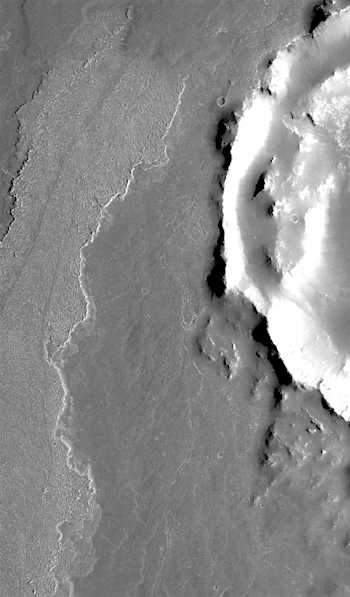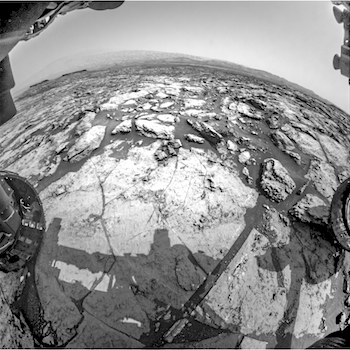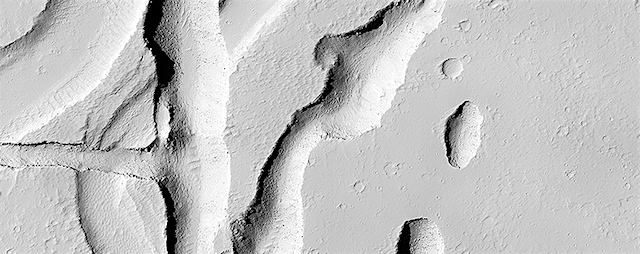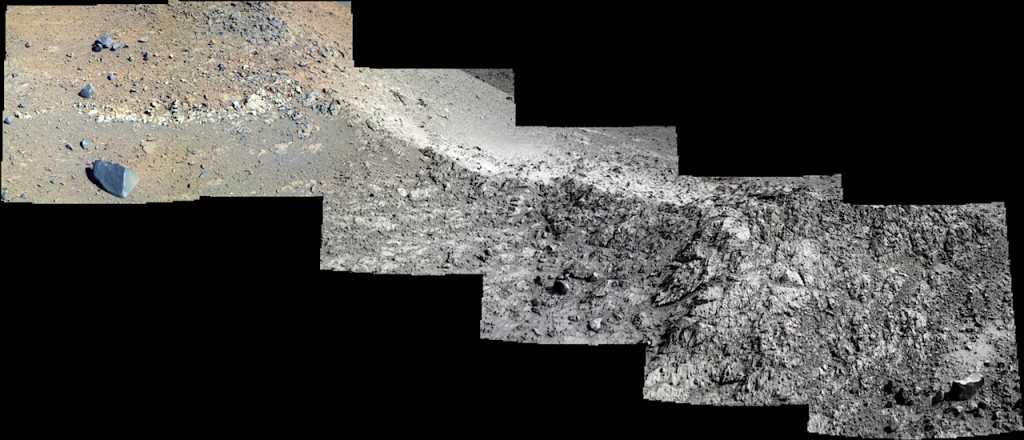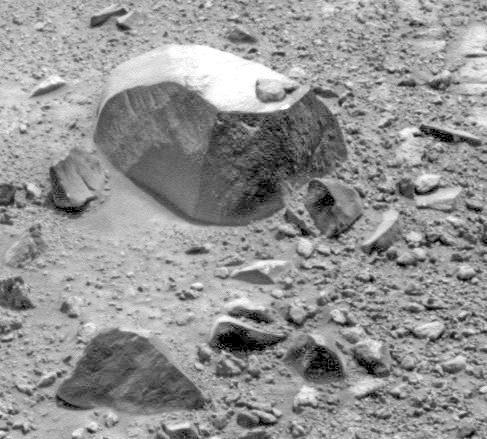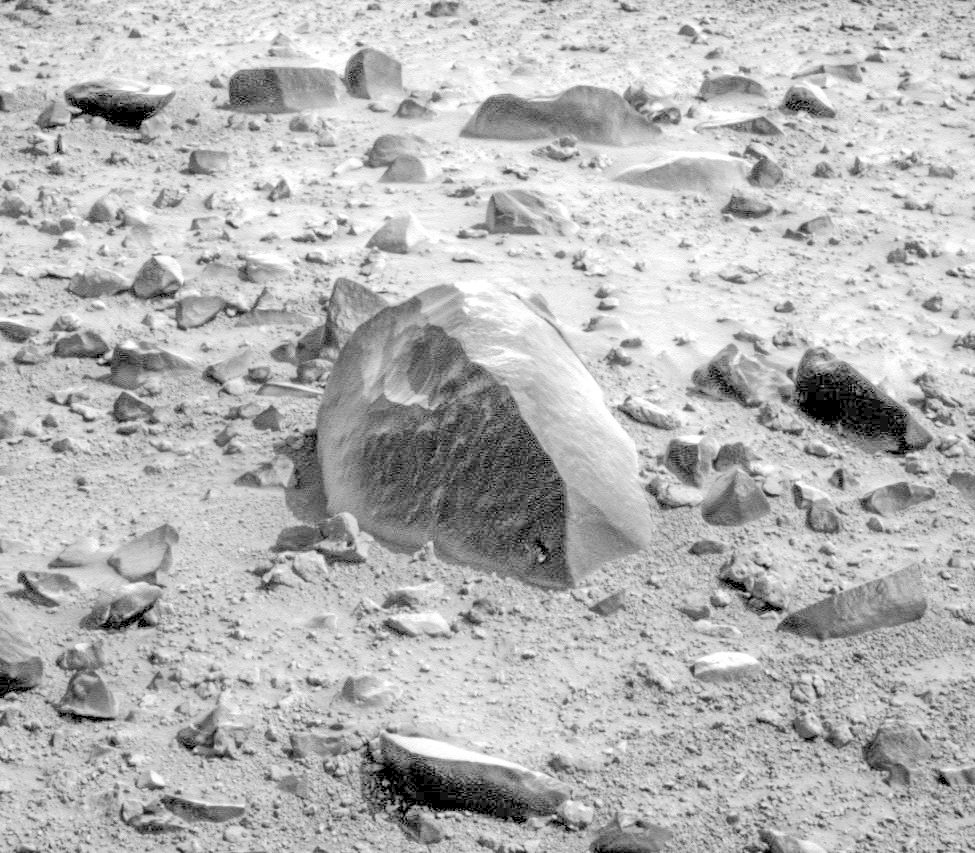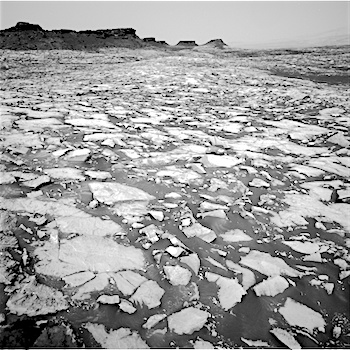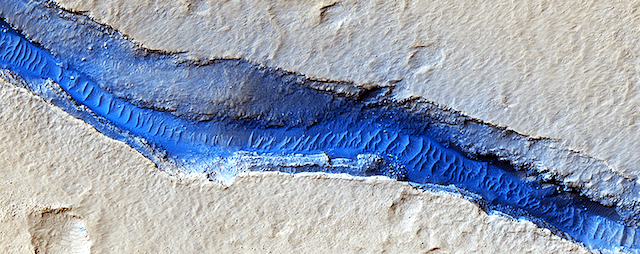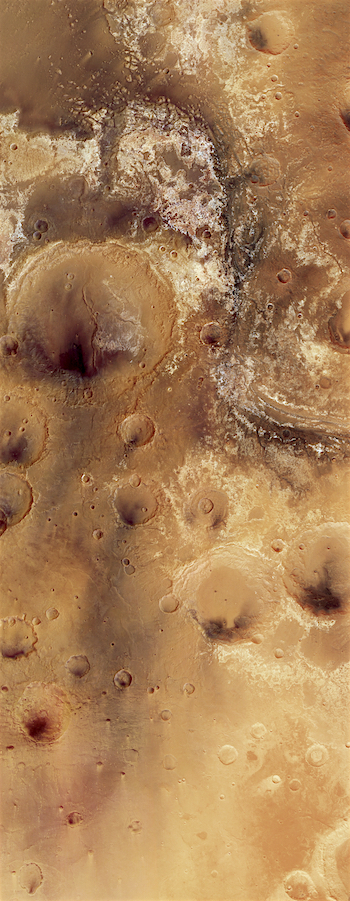 Sculpted by ancient water flowing on the surface, Mawrth Vallis is one of the most remarkable outflow channels on Mars. The valley, once a potentially habitable place, is one of the main features of a region at the boundary between the southern highlands and the northern lowlands.
Sculpted by ancient water flowing on the surface, Mawrth Vallis is one of the most remarkable outflow channels on Mars. The valley, once a potentially habitable place, is one of the main features of a region at the boundary between the southern highlands and the northern lowlands.
Mawrth Vallis takes centre stage in this image, a bird’s eye view of a 330 000 sq km area surrounding the valley. With a length of 600 km and a depth of up to 2 km, it is one of the biggest valleys on Mars. Huge amounts of water once passed through it, from a higher elevation region, part of which is shown in the lower right of the image, into the northern plains, in the top left.
Among the remarkable features are the large exposures of light-toned phyllosilicates (weathered clay minerals) that lie along its course. Phyllosilicates on Mars are evidence of the past presence of liquid water and point to the possibility that habitable environments could have existed on the planet up until 3.6 billion years ago.
A dark cap rock, remains of ancient volcanic ash, covers many of the clays and could have protected traces of ancient microbes in the rocks from radiation and erosion. This makes Mawrth Vallis one of the most interesting regions for geologists and astrobiologists alike. It is one of the candidate landing sites for ExoMars 2020, a joint mission between ESA and Russia, with the primary goal of finding out if life once existed on Mars. [More at link]









